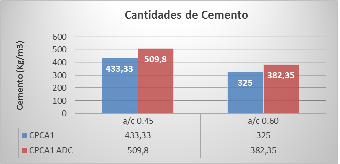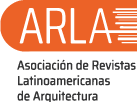Technical evaluation of resistance to compression in concretes made with CPCA cement
DOI:
https://doi.org/10.13140/RG.2.2.14542.87366Keywords:
compressive strength, Portland cement Type I, added cementAbstract
In recent years Venezuela has presented a crisis on the demand, commercialization and production of cement, the material needed for construction, therefor additive cements are being used without any type of regulations. This work presents the physical-mechanical characterization of three concrete mixtures with water / cement ratio of 0.45 and water / cement ratio of 0.60 with different types of Portland cement, Type I, Type CPCA1,and the third mixture corresponds to Type CPCA1 Rewarding it with a 15% addition in his own weight, developing a mixture of better quality. These concretes were characterized by: settling, setting time, percentage of total porosity, percentage of water absorption and mechanical resistance to compression. The results showed that the concrete mixture produced with CPCA1 does not meet the minimum requirements established in the Venezuelan standard for use in the elaboration of structural concrete, because among other parameters its resistance to compression it’s below the design value. As for the CPCA1 giving it 15% addition in its own weight meets the requirements, and can be used in the manufacture of concrete structural elements.
Downloads
References
[2] I. Figueira y E. Meléndez, “Evaluación de las propiedades físico- mecánicas de mezclas de concreto elaboradas con cemento adicionado portland tipo CPCAI con relaciones agua/cementante y agua/cemento de 0.45 y 0.60”, Decanato de Ingeniería Civil, Universidad Centroccidental Lisandro Alvarado, Lara, Venezuela, 2014.
[3] H. Bolognini, N. Martínez, O. Troconis de Rincón “Caracterización química y físico-mecánica de cementos adicionados de filer calizo en Venezuela” Revista Alconpat, Mexico, 2015.
[4] H. Bolognini, “El tipo de cemento puede determinar la vida útil de las estructuras” Diario El Impulso. Barquisimeto, Venezuela, 2011.
[5] J. C. González, “Comparación de las propiedades físicas, mecánicas de los cementos adicionados y portland tipo I producidos en la región centroccidental" Decanato de Ingeniería Civil, Universidad Centroccidental Lisandro Alvarado, Lara, Venezuela, 2009.
[6] G. Mujica, “Caracterización físico mecánica de concretos elaborados con cementos adicionados CPCA1” Decanato de Ingeniería Civil, Universidad Centroccidental Lisandro Alvarado, Lara, Venezuela, 2012.
[7] COVENIN 2385:2000 Concreto y Mortero. Agua de Mezclado. Requisitos. (1ra Revisión) FONDONORMA, 2000
[8] COVENIN 277-2000 Concreto. Agregados. Requisitos (3ra Revisión) FONDONORMA, 2000
[9] AMERICAN CONCRETE INSTITUTE (ACI) Requisitos de Reglamento para Concreto Estructural (ACI 318S-05) y Comentario (ACI 318SR-05) Producido por el Comité ACI 318, 2005
[10] O. Troconis y col, “Impacto del ambiente tropical en la durabilidad de las estructuras de concreto armado” Revista de la Universidad del Zulia 3ª época, Año 2 Nº 2, 100 – 154, 2011.
[11] COVENIN 339-2003 “Concreto. Método para la medición del asentamiento con el cono de Abrams” (2da Revisión) FONDONORMA, 2003
[12] COVENIN 338-2002, “Método para la elaboración, curado y ensayo a compresión de cilindros de concreto” FONDONORMA, 2002
[13] COVENIN 352-1979 “Método de ensayo para determinar el tiempo de fraguado de mezclas de concreto por resistencia a la penetración” FONDONORMA., 1979
[14] COVENIN 338-2002 “Medida de la Resistencia a la Compresión” FONDONORMA, 2002
[15] Durar, Manual para la inspección, evaluación y diagnóstico de la corrosión en estructuras de concreto reforzado, CYTED, Maracaibo, Venezuela, 1998.
[16] J. Porrero, C. Ramos, J. Graces, G. Velazco, Manual del Concreto Estructural, Caracas, Venezuela, 2004.
[17] COVENIN 1976-03 Concreto. Evaluación y Métodos de Ensayo (3ra Revisión) FONDONORMA, 2003
[18] H. Bolognini, Capítulo IV, Ensayos de Evaluación de Concreto Armado, en Un Enfoque integral. Prevención de daños y rehabilitación de estructuras de concreto armado, Dirección Técnica M. Dickdan, Universidad Centroccidental Lisandro Alvarado, 2013

Published
How to Cite
Issue
Section
The opinions expressed by the authors do not necessarily reflect the position of the editor of the publication or UCLA. The total or partial reproduction of the texts published here is authorized, provided that the complete source and electronic address of this journal is cited. Authors have the right to use their articles for any purpose as long as it is done nonprofit. The authors can post on the internet or any other media the final approved version of their work.






.png)




